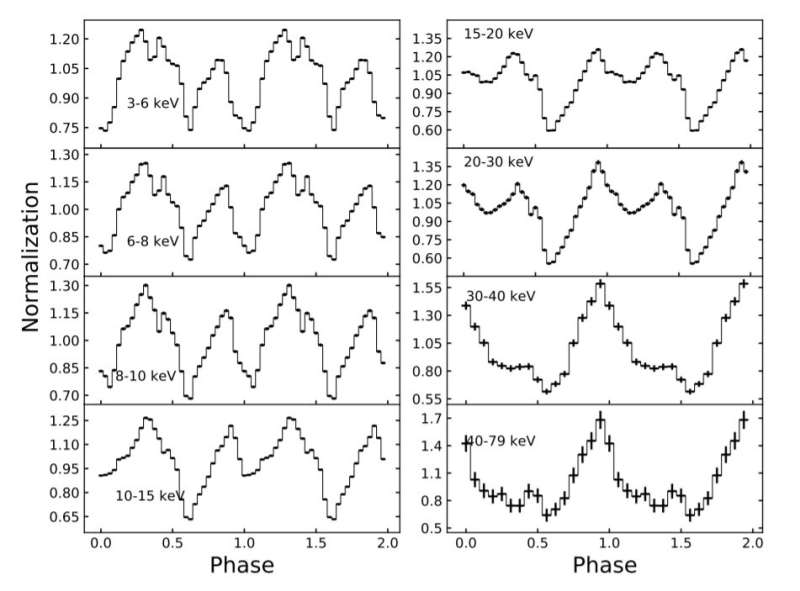October 19, 2021 report
X-ray Pulsar XTE J1946+274 investigated with NuSTAR

Using NASA's Nuclear Spectroscopic Telescope Array (NuSTAR) spacecraft, Russian astronomers have investigated a transient X-ray pulsar known as XTE J1946+274. Results of the study, presented in a paper published October 11 on arXiv.org, provide more insights into the nature of this object.
X-ray pulsars (also known as accretion-powered pulsars) are sources displaying strict periodic variations in X-ray intensity, consisting of a magnetized neutron star in orbit with a normal stellar companion. In these binary systems, the X-ray emission is powered by the release of gravitational potential energy as material is accreted from a massive companion. X-ray pulsars are among the most luminous objects in the X-ray sky.
XTE J1946+274 is a transient X-ray pulsar first detected during its outburst in September 1998 with the All-Sky Monitor (ASM) onboard the Rossi X-ray Timing Explorer (RXTE). The pulsar is located some 32,000 light years away and exhibits coherent pulsations with a period of 15.83 seconds.
The latest outburst of XTE J1946+274 occurred in 2018 and a team of astronomers led by Alena Gorban of the Russian Space Research Institute decided to employ NuSTAR to conduct spectral and timing analysis of the emission from this pulsar. The research was complemented by data from NASA's Swift spacecraft.
"In this paper, we analyzed the observational data for the X-ray pulsar XTE J1946+274, obtained with the Nustar observatory in June 2018," the researchers wrote.
The study performed by Gorban's team found that the broadband spectrum of XTE J1946+274 could be best described either by the Comptonization model, or by a power law with a high-energy exponential cutoff, including the absorption at low energies and the fluorescent iron line at 6.4 keV.
Moreover, a cyclotron absorption line at an energy of approximately 38 keV was detected in the spectrum of the pulsar, confirming the assumptions based on previous observations. The detection allowed the astronomers to calculate the magnetic field strength on the surface of the pulsar's neutron star. This value was estimated to be at a level of 3.2 trillion G.
According to the paper, the observed pulse profiles of XTE J1946+274 change noticeably with increasing energy. The observations identified two peaks separated approximately by half the phase at energies from 3 to 20 keV. The researchers offer a hypothesis that may explain such behavior.
"The most natural explanation of this fact is that these two peaks are associated with the emission from the two neutron star poles. As the energy increases, these peaks are transformed into one peak that is observed up to about 79 keV," the authors of the study wrote.
The research also found that the maxima of the iron line equivalent widths do not coincide with the maxima of the pulse profile. The finding allowed the scientists to determine the time delay (about 12.6 seconds) between the emission and equivalent width peaks, which corresponds to a distance of approximately 3.8 million kilometers. This value exceeds the inner size of the accretion disk but is much smaller than the distance to the companion star of XTE J1946+274.
More information: A. S. Gorban et al, Study of the X-ray Pulsar XTE J1946+274 with NuSTAR. arXiv:2110.05337v1 [astro-ph.HE], arxiv.org/abs/2110.05337
© 2021 Science X Network





















